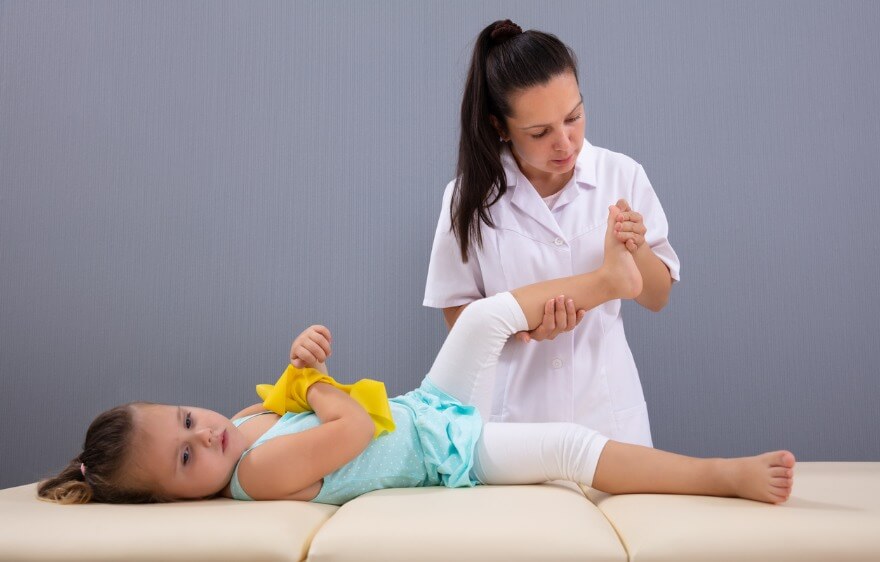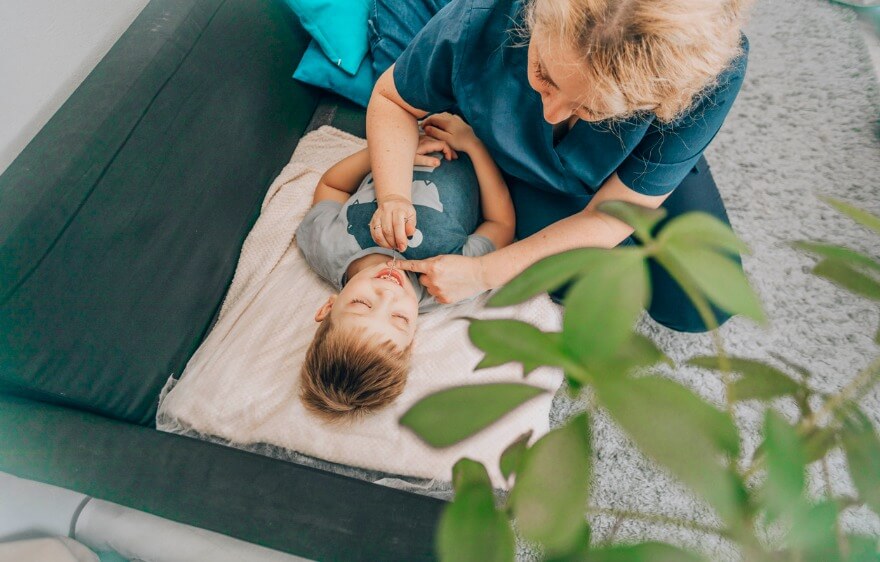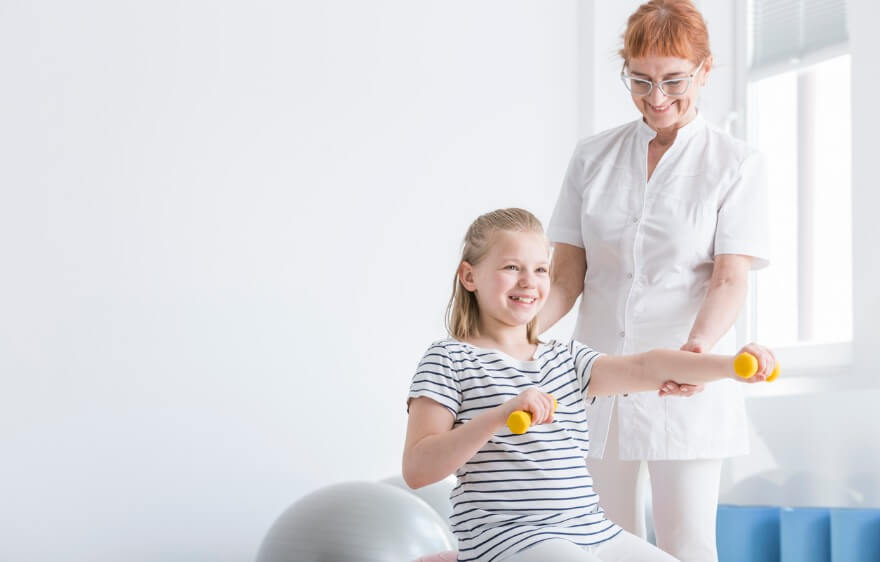When children move, they learn. Movement is a vital part of development, from a baby’s first tummy time to When children move, they learn. Movement is a vital part of development, from a baby’s first tummy time to a toddler’s wobbly first steps to a child climbing the jungle gym with confidence. But for many children, especially those with developmental delays, injuries, or neurological conditions, moving can be a challenge. That’s where pediatric physical therapy comes in.
In this guide to pediatric physical therapy techniques, we’re taking a practical, evidence-based look at the tools and strategies that therapists use to help young people reach their full potential. Whether you’re a fellow PT or a parent seeking more information, we’re happy to provide key information on this important topic.
The Importance of Targeted Pediatric Physical Therapy Techniques
Pediatric physical therapy focuses on improving the movement, strength, coordination, and functional abilities of children from infancy through adolescence. It’s not just about recovering from an injury. Pediatric PTs support children with congenital conditions, genetic disorders, developmental delays, neuromuscular diseases, and even everyday aches and pains.
The goal? To help children participate as fully as possible in daily activities — play, school, sports, and life.
At the heart of pediatric physical therapy techniques is a deep understanding of how children grow and learn. Techniques must be developmentally appropriate, adaptable, and, most importantly, fun. Evidence-based practices are the foundation of high-quality care. This means using current research, clinical expertise, and input from children and families to guide therapy decisions.
A great pediatric PT doesn’t just treat impairments — they create engaging sessions that motivate young clients to push their limits, explore new movements, and build lifelong habits of activity.
Why Evidence-Based Pediatric Physical Therapy Techniques Matter
Kids aren’t just small adults. Their brains and bodies are developing rapidly, which means the techniques used in therapy need to match their specific needs at every developmental stage. Evidence-based pediatric physical therapy techniques help ensure that children receive the safest and most effective care possible.
Research-backed methods have been tested and proven to promote positive outcomes, whether the goal is increasing range of motion, building core strength, improving balance, or regaining mobility after surgery or injury. When PTs incorporate these techniques into individualized care plans, children can make progress that’s not only measurable but meaningful.
Now let’s take a closer look at pediatric physical therapy techniques that can boost strength and range of motion for children across a wide range of diagnoses and developmental levels.
16 Pediatric Physical Therapy Techniques to Improve Strength and Range of Motion
PTs can use the following pediatric physical therapy techniques across a full spectrum of applications and needs. Many can be scaled up or down depending on the child’s age, condition, and abilities.
1. Tummy Time With Resistance
Starting with the basics, tummy time isn’t just for babies. Using soft resistance, such as weighted toys or rolled-up towels under the chest, helps build neck, shoulder, and trunk strength. For older children, prone positioning on therapy balls adds a challenge and keeps it fun.
2. Animal Walks
Bear crawls, crab walks, and frog jumps — these playful movements activate core muscles, improve shoulder stability, and increase mobility in hips and knees. They’re a go-to in many pediatric physical therapy sessions because they blend strength-building with imaginative play.
3. Therapy Ball Activities
Sitting, bouncing, and rolling on a therapy ball strengthens the core and enhances balance. Children often don’t even realize they’re working because it feels like play. This technique can be integrated into warm-ups, stretching, or sensory regulation activities.
4. Wall Squats With Visual Cues
Wall squats help strengthen quads, glutes, and calves while improving postural control. Adding visual cues like stickers or colored tape for foot placement turns it into a game and promotes better alignment.
5. Obstacle Courses
Obstacle courses are a staple in pediatric physical therapy techniques. Climbing, crawling, hopping, and balancing all in one sequence develop strength, coordination, and range of motion. Therapists can design obstacle courses around therapy goals and modify them for any ability level.
6. Theraband Resistance Exercises
Therabands are fantastic tools for gently increasing strength in arms and legs. PTs use them to target specific muscle groups with simple movements like rows, shoulder abductions, and resisted hip extensions.
7. Aquatic Therapy
The buoyancy of water reduces joint stress while resistance increases the workload on muscles. Aquatic therapy is ideal for children with joint pain, spasticity, or difficulty bearing weight. It’s also a great sensory experience that can calm or energize.
8. Core Stability Games
Using balance boards, wobble cushions, or interactive video games, therapists can work on core stability in dynamic and engaging ways. These tools challenge proprioception and trunk control — essential for everything from walking to sitting in class.
9. Stretching Routines With Songs
Stretching is essential for improving range of motion, especially in children with tight muscles or spasticity. When combined with songs or rhymes, stretching becomes rhythmic, predictable, and enjoyable, increasing participation.
10. Weight Shifting and Transitional Movements
Practicing sit-to-stand, kneeling to standing, or side-sitting encourages weight shifting and strengthens the lower body. These transitional movements are crucial for functional mobility and can be turned into games or story-driven activities.
11. Resistance Crawling
Adding light resistance using small ankle or wrist weights during crawling activities boosts muscle activation. This technique is particularly effective in building upper body strength in children who are still mastering crawling patterns.
12. Yoga for Kids
Simple yoga poses like downward dog, tree pose, or cat-cow help improve flexibility, coordination, and breath control. Many PTs use yoga-inspired routines to foster body awareness and calm in busy little bodies.
13. Dynamic Balance Challenges
Using stepping stones, balance beams, or even painter’s tape on the floor, therapists can challenge children’s balance while promoting strength in ankle and hip stabilizers. Adding storytelling or themes, like crossing a lava river, keeps it playful and immersive.
14. Scooter Board Activities
Scooter boards are a fun way to work on upper body strength, core stability, and motor planning. Children can lie on their stomachs and use their arms to propel themselves forward, which mimics crawling and engages important postural muscles. You can create races or obstacle courses to keep the activity exciting while targeting coordination and endurance.
15. Heel Walking and Toe Walking
These simple walking variations help strengthen the muscles of the lower legs and improve ankle mobility. Heel walking emphasizes dorsiflexors, while toe walking works the calf muscles. Incorporating these into obstacle courses or warm-ups is a great way to improve balance and gait patterns in a playful setting.
16. Balloon Volleyball
Using balloons for a game of volleyball or keep-it-up encourages upper extremity range of motion, coordination, and reaction time. The lightweight nature of the balloon slows the game down, making it accessible for kids of all ability levels. Plus, it encourages social interaction and team play.
Tips for Successfully Implementing Physical Therapy Techniques
Adding pediatric physical therapy techniques to your sessions is just the beginning. The real magic happens when these tools are used with thoughtfulness, creativity, and compassion. Here are some practical tips for success:
- Follow their lead: Pay attention to what motivates children and build from their interests. If a child loves animals, integrate those into your cues and activities.
- Keep it playful: Even the most effective technique won’t work if a child is bored or disengaged. Use props, music, games, and imagination to keep things fun.
- Break it down: Complex movements can be taught in parts. Don’t rush through the steps — celebrate progress in each component.
- Be consistent but flexible: Routine builds trust and predictability, but be ready to adjust when a child’s energy or mood shifts.
- Use visual and tactile cues: Marking foot positions with tape or placing small toys as reach targets can enhance body awareness and alignment.
- Collaborate with families: Parents and caregivers are essential partners. Share simple versions of techniques they can do at home between sessions.
- Track and celebrate progress: Make achievements visible with sticker charts, progress photos, or certificates. Every small victory matters.
Helping Kids Move Toward Their Best Selves
Pediatric physical therapy techniques are more than just exercises — they’re tools that empower children to grow stronger, more confident, and more capable. By combining evidence-based methods with creativity and care, therapists can create meaningful change in the lives of their young people.
Whether it’s helping a toddler learn to walk, supporting a child with cerebral palsy to improve their posture, or aiding recovery after an injury, these techniques offer hope and measurable progress.
So if you’re a therapist looking to refresh your toolkit, a parent eager to support your child, or just someone curious about how kids move and thrive — we hope these pediatric physical therapy techniques have inspired you to see the beauty and science of helping children grow through movement.
Care Options for Kids is dedicated to connecting caring therapists with families to deliver life-changing pediatric physical therapy. When we empower professionals with the expertise, tools, and support they need, we all work together to help children and families reach critical milestones — and their full potential.
Join the Care Options for Kids Team!
Are you ready for meaningful work that comes with benefits and not burnout? Join the compassionate care team that helps children and families live their best lives. Our clinicians provide best-in-class pediatric nursing, therapy, and school-based services. We bring individualized care to children where they live, work, and play. We have opportunities in homes, schools, and clinics across the country.
Apply at Care Options for Kids now. We make it easy to start so you can make a difference as soon as possible.






